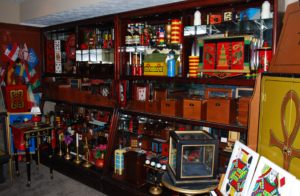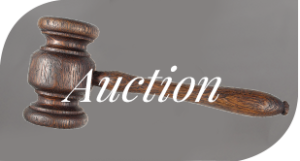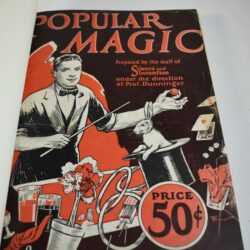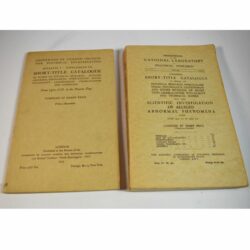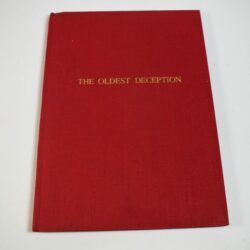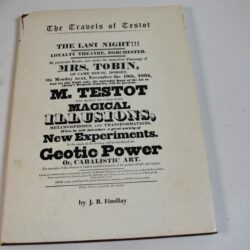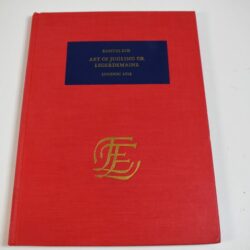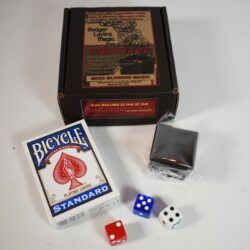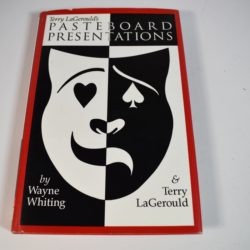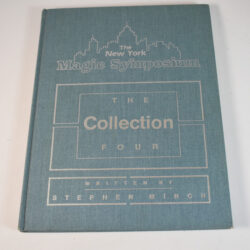It is highly unlikely that there is anyone out there (including myself) that collects magic solely for an investment. We love the objects just as art collectors and chalk dog collectors love what they collect.
Why we collect is largely unknown. Why do some people collect objects and others think that collecting has no redeeming value? I guess we can keep that discussion for another time. For now, let’s assume we are magic collectors and bleed thumb tips when cut. What can you do to try to put together the best magic collection possible? I am talking about putting together a thoughtful collection as opposed to just accumulating. Here are some thoughts.
LEARN YOUR SUBJECT
If you are an eclectic collector like myself or specialize in a particular magician, type of apparatus, posters, postcards or whatever you collect, you need to become an expert in that subject(s). Some of this happens by osmosis during the hunt but I am speaking of more than that. To be the best at something you need to immerse yourself into it. Become the Tiger Woods of collecting. Norm Nielsen did not become the great poster collector he did sitting at home. Randy Forgaard did not become the token king by going to the opera. They immersed themselves into the subject. They were driven to learn all they could about their focus of collecting. Read everything you can, study old catalogues, find old auction results, find a mentor, search the internet, attend collector conventions where you can learn from like minded people. Build a reference library on your subject. You need to be willing to put in the time (it is quite fun) if you wish to become an expert and I contend the experts put together the best collections. To make something quite clear, you do not have to have a great deal of money. That is not what I am talking about. Sure, that would make things easier but many very famous collectors of the past and present are not wealthy people. What they have is passion and they do recognize value (and fully understand market value) when they see it. Knowledge is king in collecting and that knowledge has helped them to achieve very attractive prices on much of what they purchase. That knowledge will help you to recognize value when you see it.
Some passionate collectors I know have a very narrow subject range. So, if child magicians of the 19th century inspire you, go for it. Just be passionate and become the expert and your purchases will likely be kind to you or your heirs in the future.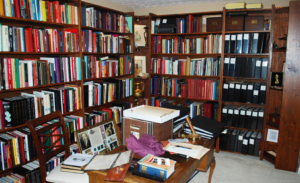
GENERAL BUYING TIPS
- Buy absolutely the best item you can find or afford. It is the top end of items that always hold their value.
- Buy the best condition you can find. If you find a better one buy it and trade up by selling your old one. Top conditioned items always hold their value.
- When purchasing through auction houses ALWAYS mentally add the buyer’s premium to your bid. Set your maximum bid including fees and do not go over it. Don’t get caught up in the excitement or competition of a bid. This can lead to bad purchases (investments) that never re-coup value paid.
- Find reputable knowledgeable dealer(s) you can trust. That is where I come in!
- Spot trends (or create them). I was one of the first to collect magician costumes about 20 years ago. I had a passion for them and they were cheap. That insight will pay off many times at some point in the future when I sell them. Did you notice that original artist drawings of magic subjects have skyrocketed in price over the last few years? Be aware and on on the front end of these kind of trends.
- Be creative in building a collection. Thomas Worthington used to ask for things from magicians. They sent them. He built quite a collection. It probably helped a little knowing Thurston but never the less he was never wealthy and built a huge valuable collection. Taking a play out of his playbook Ken Klosterman starting collecting magician cufflinks. By in large they were donated to him. I have seen that collection and I can tell you it is very valuable. Maybe Ken did not do this for investment purposes (these people are in general his friends) but just coming up with this was ingenious. The ones he had to buy were relatively reasonable. Now you see cufflinks quite regularly in magic auctions. Not so reasonable anymore.
- Put in the time searching. This can feel like work but remember that passion we have! EBay is of course a great place that has been long available. I spent hours on it probably only eclipsed by Ken Trombly who always seemed to outbid me at the last minute (we all have our nemesis in collecting). It can lead to incredible buys if you know your subject! There are many other internet ways to look so take advantage of all of them including social media sites. Look at the dealer sites on the web as well. I can go to any site and find something that I think is below market value. Many times, on my site I purposely price below market value because I would like a quick sell to re-invest my money. Also, if I bought it right I can afford a smaller price. The value for me is in the turn.
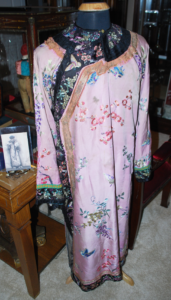
TIME TO SELL
If you are truly investing in magic, you must be prepared to sell. A very wise old magic dealer once told me “The time to sell is when someone is knocking on your door with cash and no one is in line behind him”. Truer words have never been spoken.
I do sell my collection. I won’t say everything is for sale but nearly everything. Much of what you see on the site started out as my collection. I continue to pull pieces from it almost weekly. Why? As I told you week one, I have always considered my collection an investment and if I am not willing to sell, there is no investment in the true sense of the word. I also fill customer request from my investment. I field emails and calls asking me if I have an item. If it exists in my collection I price it to them. Much of my business is done that way.
Another way to sell key items is to consign them with an auction house. Many of us who invest in magic do that on a regular basis. I particularly do this when I think an item may have an extreme upside to the price. You don’t think Potter and Haversat and Ewing own all that stuff. I have two items coming up in the Potter auction so bid high and often!
I accept consignments on my site. It is not a big part of my business but it works well for those who choose to sell there. Check it out under “how to sell on our site” on the home page.
Selling and trading between fellow collectors is always a great option as well.
LETS FACE REALITY
Reality is most people reading this are going to build some great collections in their lifetime. They are never going to sell any significant part of their collection at any point in their lifetime. If you have done it right however, you will still leave significant value to your heirs. Make sure they understand that it has value.
It should not be thrown away nor should it be left to auction houses who don’t have a clue what magic is or what it is worth. I have seen this done many times and it is truly sad.
There are so many options about what to do with a collection after its curator is gone. Think it through. Have a plan. Make sure your family knows to deal with someone you trust. Have the conversation. Don’t wait.
Your collection is part of your life’s work (joy). Make sure you have the say in where and how it goes.